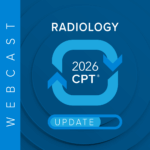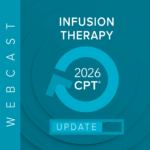A few weeks ago, I shared some information about Risk Adjustment Data Validation (RADV) coding audits. I mentioned the increased number of audits, and the impact the record requests for these audits would have on a health information management (HIM) department’s release of information (ROI) staff.
These audits are still expected to occur, but the shortened timeframe of 12 weeks to produce records that I mentioned was extended to 20 weeks by the Centers for Medicare & Medicaid Services (CMS) in a Health Plan Management System (HPMS) memo I had overlooked. That’s good news for ROI teams.
Additionally, there is other news in the Medicare Advantage (MA) world. Last Thursday, a Texas U.S. District Court sided with a plaintiff, Humana, and cancelled the CMS RADV Final Rule that eliminated the fee-for-service adjuster and added extrapolation processes. These would have happened this year, with the RADV audits of the 2018 payment year.
Part of Humana’s case was the assertion that CMS abused its authority to apply the new policy retroactively. The Final Rule forecasted that CMS would have been able to claw back $4.7 billion in overpayments to MA plans over an approximately 10-year period.
I’m certain that there was a huge sigh of relief in MA plan board rooms nationwide last week.
You may recall that CMS Administrator Dr. Mehmet Oz intends to increase the agency’s audits of the current sample of 60 MA plans to cover all 500+ MA plans.
According to one source, CMS believes that the increase in plans audited and increasing the number of cases reviewed from 35 cases to 200 per plan will support its next argument: that extrapolation is a credible and fair approach.
The question remains why CMS didn’t move forward with hiring 2,000 coding auditors. Perhaps CMS anticipated this ruling, or maybe CMS intends to engage contractors to supply the coders. Regardless, the expanded audit scope will be necessary to make up some of CMS’s losses from this court ruling.
But the scrutiny of MA will not just end. The U.S. Department of Health and Human Services (HHS) Office of Inspector General (OIG) is jumping in with now five targets in its current Work Plan, just during the last six months!! (See https://oig.hhs.gov/reports-and-publications/workplan/updates.asp). Here are some highlights:
- Like the RADV audits, the OIG will be assessing diagnosis codes that MA organizations submitted to CMS as part of the risk adjustment program. (OIG Workplan: OAS-25-02-025)
- Another diagnosis focus for the OIG includes the questionable use of health risk assessments among dual-eligible special-needs plans to determine the extent to which the MA plans received risk adjustment payments for diagnoses that only appeared in the risk assessments and no other medical records. (OIG Workplan: OEI-03-25-00210)\
- Misleading MA marketing practices, identified through consumer complaints, wherein aggressive and deceptive marketing practices were used. (OIG Workplan OEI-02-25-00340)
- Utilization, oversight and primarily reporting of MA in-home supplemental benefits offered to enrollees to help manage their chronic conditions or support their access to care. (OIG Workplan: OAS-25-06-087)
- The newest addition to the OIG list is MA enrollment schemes. Apparently there are concerns that some plans are using schemes that enroll people into MA plans without their consent, and at the same time give incentive payments to agents and pay kickbacks to providers in exchange for enrollments. (OIG Workplan: OEI-BL-25-00380)
Depending on the topic, the OIG’s Office of Evaluation and Inspections or Office of Audit Services will be performing the review.
The Office of Audit Services (OAS) provides independent, detailed assessments of specific programs and operations using established auditing standards to ensure compliance and efficiency. Its purpose is to identify and reduce waste, abuse, and mismanagement, and to promote economy and efficiency in specific program operations.
In contrast, the Office of Evaluation and Inspections (OEI) conducts broad, issue-based national evaluations and inspections from a program perspective to identify vulnerabilities, assess strengths and weaknesses, and offer practical recommendations for program improvements. Its purpose is to identify vulnerabilities, prevent fraud, waste, and abuse, and encourage improvements in program efficiency and effectiveness through those practical recommendations.
In summary, there is much ahead to watch by all of us who are impacted by risk adjustment activities.













